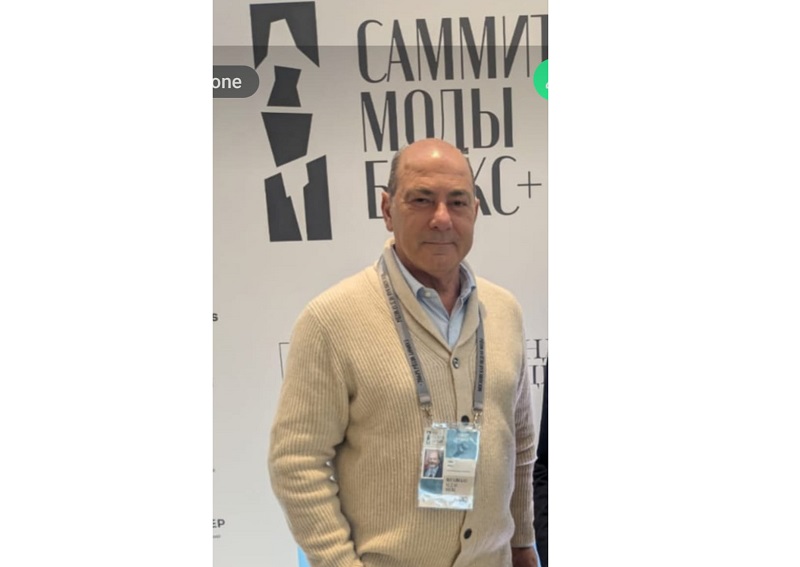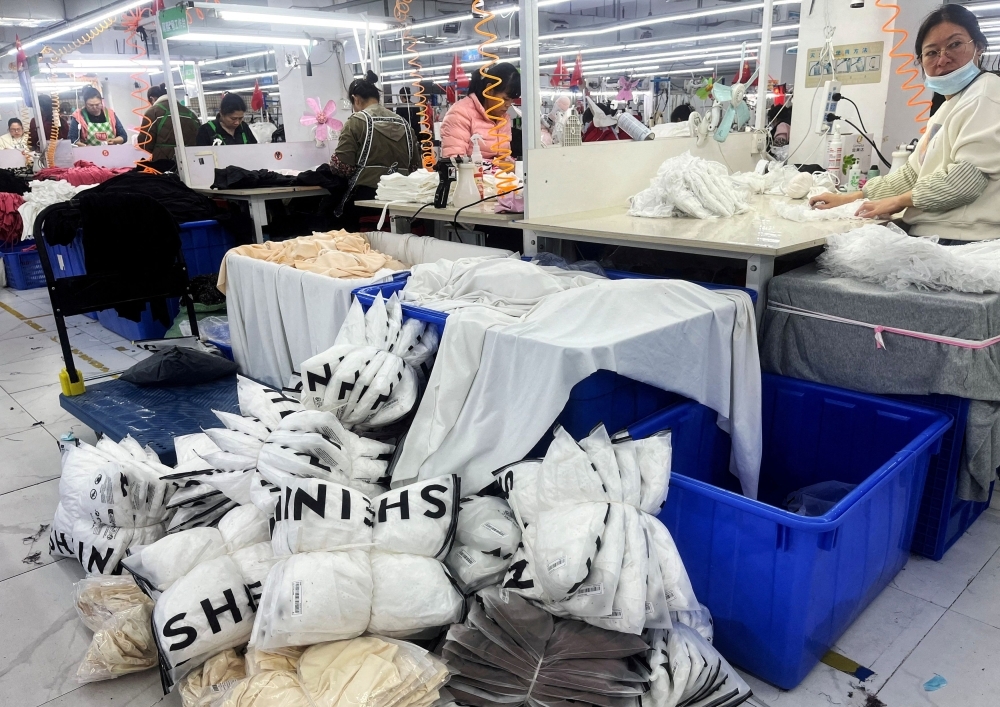FW
A garment fair will be held in Secunderabad from July 23 to 25, 2017. This is the consecutive 19th edition of the fair being organized by the Garments Manufacturers and Wholesalers Association (GMWA).
This edition will witness a much wider participation in terms of visitors and exhibitors, who are not only from Telangana and Andhra Pradesh but also from Mumbai, Indore, Ahmedabad, Bangalore and Ludhiana. The huge business potential this fair offer is primarily responsible for attracting major national brands. The strategic dates of the fair are also a contributing factor.
A variety of products covering cotton and blends, wovens and knits, treatments, finishes, prints and patterns, lines and stripes, embroideries and appliqués would be on display. Last year approximately Rs 40 crores business was generated with 3,000 delegates attending the fair.
GMWA was established in 1998 to cater to the needs of the garment industry in Andhra Pradesh. It provides an unique platform for garment manufacturers and wholesalers to interact with one another and with government bodies. It promotes and maintains a high standard of professional conduct and prevents abuses or malpractices in the trade. It also promotes and develops co-operation among members and associations connected with the readymade trade industry in Andhra Pradesh.
Egypt is devising a strategy to upgrade its cotton industry. The project aims at increasing the added value of Egypt’s long and extra-long staple cotton, improving the performance of cotton farmers and producers, and maximizing the role of institutions supporting cotton production.
The project will be implemented over two years and will include building the capacity of 400 cotton farmers and 15 private companies in the textile business, improving the skills of 300 workers and offering training programs for 300 technical students.
The textile industry in Egypt contributes three per cent to Gross Domestic Product and employs nearly a third of Egypt’s workforce. Textile exports account for 15 per cent of Egypt’s non-oil exports. But while Egyptian cotton is prized for its premium extra-long staple fiber, production and exports have been on the decline. Textile and apparel imports into the US from Egypt for the first five months of the year fell 14.5 per cent from the same period a year earlier.
The development comes as Africa gets renewed attention as a textile and apparel sourcing region after years of what the industry saw as untapped potential and the 2015 renewal of the African Growth & Opportunity Act the US trade preference program.
Sutlej Textiles’ total income for Q1 of fiscal 2017-18 stood at Rs 658.73 crores. EBITDA grew to Rs 76.28 crores. PAT was at Rs 23.58 crores and EPS was Rs 14.39. Now, Sutlej, one of India’s largest spun dyed yarn manufacturers, is undertaking brownfield capacity expansion of 28,800 spindles at its specialty synthetic yarn facility in Himachal Pradesh. The estimated project cost is Rs 215 crores and the project is likely to start commercial production from the fourth quarter of fiscal 2019. The incremental capacity would be dedicated towards manufacturing of 100 per cent polyester industrial yarn and other grey blended specialty synthetic yarn.
Another brownfield project, at Rajasthan, has 17 circular knitting machines and will have dedicated capacity focused toward producing value added cotton and cotton blended dyed and mélange yarn.
The company has invested in technology upgradation and debottlenecking. This will result in further improvement of efficiency and sustaining plant utilisation.
Sutlej has been able to achieve top line growth as new capacities have started commercial production, both in spinning and home textiles. Operations are expected to stabilise during the second quarter of fiscal year ’18. Value added products will be the profit driver in the future.
Footwear company Skechers’ quarterly net sales increased 16.9 per cent. This was due in part to a 6.4 per cent increase in the domestic wholesale business, an 18.6 per cent increase in the international wholesale business, and a 28 per cent increase in the global retail business.
The domestic wholesale business shipped 11.4 per cent more pairs, while the average price per pair fell 4.5 per cent. Growth came across Skechers’ three distribution channels—with double-digit increases in the company-owned global Skechers retail business as well as a mid-single-digit increase in its domestic wholesale business.
The launch of the ‘You’ by Skechers lifestyle and wellness line also contributed to the record sales performance, with strong sales in the sandal business, and the company reported double-digit growth in China, India, Australia, Germany and Chile.
In addition to record performances, gross profit in the second quarter increased to 47.6 per cent of net sales, and selling expenses increased to 9.7 per cent of sales, compared to 8.7 per cent of sales, in the prior year, due to increased advertising. Net earnings in the second quarter fell 19.7 per cent and net earnings for the six-month period were $153.5 million.
Puma’s currency-adjusted revenue for 2017 will rise by 12 per cent to 14 per cent. The German sporting goods maker unexpectedly reported a jump in quarterly sales and profits. Puma, which had already raised forecasts in April, is into the fourth year of a turnaround, balancing sportswear and street styles with the help of endorsements from celebrities including sprinter Usain Bolt and singer Rihanna.
Shares surged as much as 7.1 per cent, extending their gain this year to 44 per cent. Second-quarter sales rose 17 per cent, representing growth of 16 per cent at constant exchange rates. Operating profit jumped to euro 43.4 million from euro 11.9 million a year earlier.
German sports brand Puma, founded in 1948, designs, develops and markets footwear, apparel and accessories. Puma offers performance and lifestyle products in team sports, running and training, golf and motorsport. It also has a dedicated line of golf equipment, apparel, footwear and accessories.
Today, Puma is one of the world’s leading sneaker companies, with models ranging from innovative shoes such as the lightweight Faas running shoe to the heritage of the classic Clyde & Suede models. Its sport performance and lifestyle labels include categories such as football, running, motorsports, golf and sailing.
Despite the special package for the textile and garment sector unveiled by India in June last year, fresh employee registrations from the sector under the employees provident fund (EPF) scheme have been just 40,800 so far.
The Pradhan Mantri Paridhan Rozgar Protsahan Yojana (PMPRPY) was expected to create a crore of new jobs, increase India’s exports of textiles and garments by 30 billion dollars and result in Rs 74,000 crores of investments in the employment-intensive sector over three years.
The PMPRPY scheme has had a slow start, but it is now picking up. The rise in numbers could be attributed to more awareness of the scheme, attractive benefits for employers and the EPF’s amnesty scheme that remained valid for six months till June last.
Under the amnesty scheme, the government bears employers’ contribution of 8.33 per cent of basic pay to the Employees’ Pension Scheme (EPS) for new employees even if new posts are not created by the firm. The benefit was earlier available only for new posts created.
The PMPRPY scheme for the apparel sector was subsequently extended to the made-ups sector too. A budget of Rs 6,006 crores was approved for the scheme.
A revamped awareness program and a logo for the PMPRPY scheme will be unveiled soon.
Afghanistan wants to revive its textile industry and India is taking steps to help it. Afghanistan produces over 59,000 tons of cotton annually but there are no cotton processing factories in the country. In the past, there were at least seven textile manufacturing factories which the country lost during the years of wars. The sector employed over 30,000 employees.
Traditional textiles of Afghanistan reflect the diverse nature of the country. The designs, materials, and techniques of the traditional textiles of Afghanistan display varying ethnic and regional influences, creating a mixture of Middle Eastern and Central Asian styles that are further combined with those of the Indian subcontinent. Clothing and household furnishings feature vibrant silk and cotton fabrics, wool woven into intricate patterns, and lavish embroidery. Even utilitarian items like grain bags and animal trappings are beautifully decorated.
India will cooperate with Afghanistan to expand business in the field of textiles and clothing. Help from India will be in the field of textiles, clothing, cotton, manmade fiber and handlooms. India has agreed to provide all necessary assistance to develop the Afghan textile industry and assist in skill development, research and development, technical collaboration in product development and manufacturing, testing and certification and joint trade missions for mutual collaboration.
A biannual conference on functional textiles and clothing will be held in New Delhi, from February 9 to 11, 2018. It’s being organsied by IIT Delhi, World University Design Sonepat and PSG College of Technology Coimbatore. Manufacturers will display functional products, smart textiles, wearables and other such products at an exhibition.
An international scientific committee comprising scientists from over 18 countries will oversee the content of the conference. The conference serves as an interdisciplinary platform for leading academic scientists, researchers, entrepreneurs and market stakeholders to share recent scientific developments, cutting edge technologies, innovations, trends, concerns, challenges and opportunities in the field of functional and smart textiles and clothing.
The topics to be discussed include protective textiles and clothing, medical textiles and clothing, athletic, extreme sports and military applications, smart, functional and interactive textiles, mass customization, garment design and manufacturing, design methodologies, education and training, innovation and entrepreneurship, supply chain management, sustainable production and recycling.
In addition to technical papers, the conference has announced innovation contests for students in textile and fashion products. There will also be a poster contest for students. Functional textiles may have sweat management systems or therapeutic, healing, antibacterial or antimicrobial properties.
Esquel is one of the largest suppliers of premium shirts and polos around the world. The brand produces and sells cotton shirts, men’s and women’s dress shirts, sport shirts, and woven and knitted tops as well as accessories such as buttons, labels, and hand tags.
The group has a profound focus on sustainability in its way of conducting business. It integrates sustainability into every step of the supply chain, from cotton farms to fabric mills and garment factories.
Founded in 1978, the Esquel Group, based in Hong Kong, is a global textile and apparel manufacturer with a vertically-integrated supply chain that straddles from cotton to retailing. It employs a 58,000 multinational workforce, with manufacturing facilities in China, Malaysia, Mauritius, Sri Lanka and Vietnam, and merchandising offices servicing markets worldwide. It manufactures over 100 million pieces of garments annually for leading brands including Ralph Lauren, Tommy Hilfiger and Nike.
About two-thirds of its final products are made in China. The firm is running a complete value chain in China, from cotton growing to spinning, weaving, dyeing, sewing, and retailing. And instead of chasing after cheap labor, Esquel has optimized value by focusing on so-called deskilled automation, where less talent and training is needed to operate each machine – as well as fewer staff.
Headquartered in Brussels, the Bureau of International Recycling (BIR) is concerned about revenue losses in billions of dollars and thousands of job losses in the wake of China's plans to ban imports of specific waste materials. The Chinese government notified its plans to end import of certain waste plastics, unsorted waste paper, textile wastes and metallic slags and residues to the World Trade Organization (WTO).
Whilst BIR and its members support and promote high quality standards for scrap exports, this ban, if implemented, will have a serious impact on global recycling industry, says BIR's director general Arnaud Brunet. He also noted international trade in scrap materials had supported China's economic growth over the last quarter century and had provided the secondary raw materials needed by Chinese companies for production.
According to BIR, the value of secondary raw materials shipments to China runs into the tens of billions of US dollars. Last year, China imported 7.3 million tonnes of waste plastics worth billions of dollars primarily from Europe, the US and Japan. These were also the most important sources of waste paper imports to China.
Last year, China's total waste paper imports stood at 27 million tonnes, of which 20 to 30 per cent consisted of mixed paper, according to BIR. A ban may result in a large amount of mixed paper scrap ending up outside of the circular economy stream, says the recycling umbrella organisation. BIR it will now engage with stakeholders and Chinese government to explain the "devastating impact" that the proposed ban would have on both the global recycling industry as well as for the Chinese and global economies.
BIR is represents around 800 members. Besides individual companies, they include 36 national recycling organisations.












